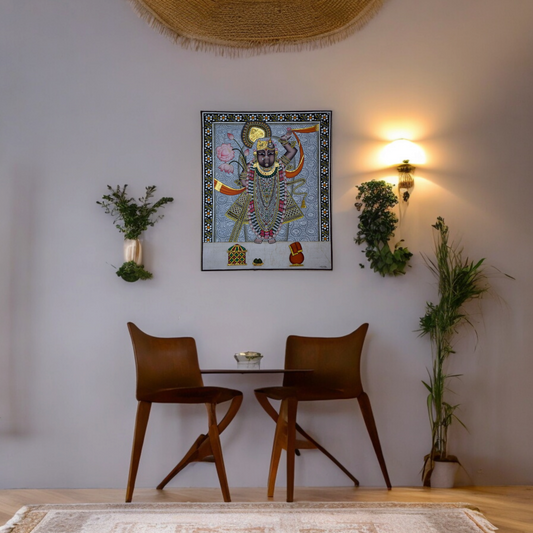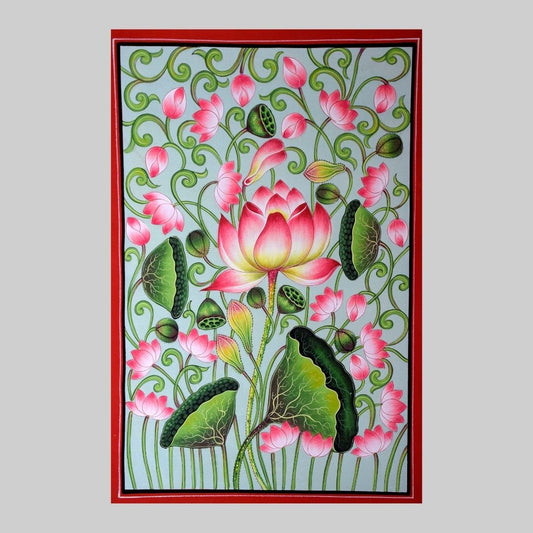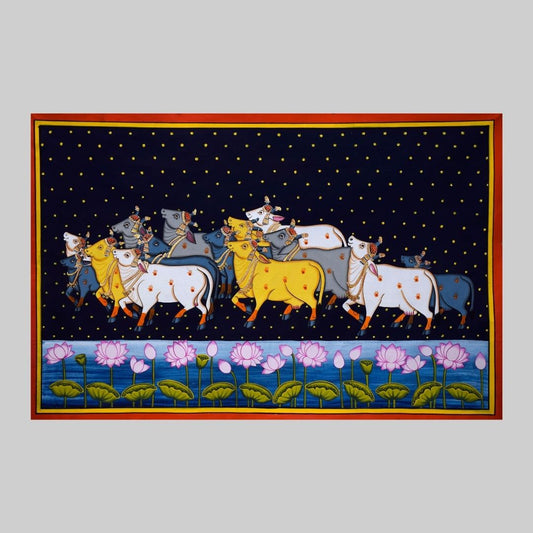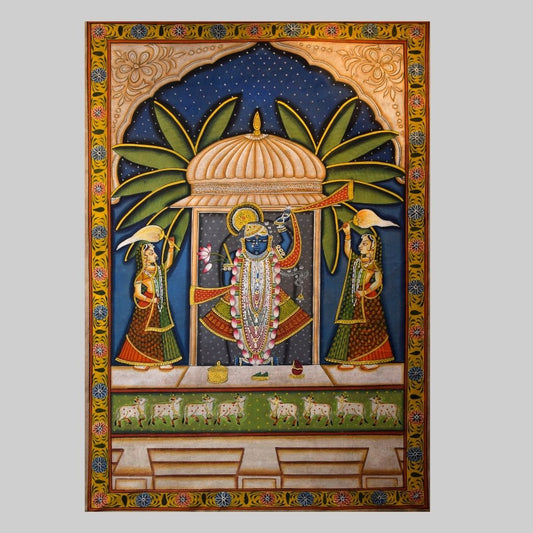-
Five Cows in a Pichwai Painting
Regular price Rs. 11,200.00Regular priceUnit price per -
Blossom Tale: Kamal Talai and Cow, Pichwai Painting- Set of Two
Regular price Rs. 11,200.00Regular priceUnit price per -
Krishnaashtami Rajbhog Swaroop Pichwai Painting
Regular price Rs. 15,700.00Regular priceUnit price per -
Shrinathji wooden embossed face ideal
Regular price Rs. 20,000.00Regular priceUnit price per -
Gopashtami Rajbhog Swaroop Pichwai Painting
Regular price Rs. 20,200.00Regular priceUnit price per -
Lotus Pond Pichwai Painting
Regular price Rs. 28,000.00Regular priceUnit price per -
Divine Krishna and Gopi Raasleela Pichwai Painting Traditional
Regular price Rs. 28,000.00Regular priceUnit price per -
Golden Cow & Lotus Wall Traditional Pichwai Painting
Regular price Rs. 33,600.00Regular priceUnit price per -
Ashwatha (Peepal) Tree with Cows Pichwai Art Painting
Regular price Rs. 33,600.00Regular priceUnit price per -
Cows with Lotus Pichwai Painting
Regular price Rs. 33,600.00Regular priceUnit price per -
Ashwatha Tree with Five Cows Pichwai Painting
Regular price Rs. 33,600.00Regular priceUnit price per -
Whispers of the Cosmos: Celestial Cows, Pichwai Painting
Regular price Rs. 33,600.00Regular priceUnit price per -
Twelve cows with Lotus Pichwai Painting
Regular price Rs. 33,600.00Regular priceUnit price per -
Cow Pichwai Sharad Purnima Painting
Regular price Rs. 40,300.00Regular priceUnit price per -
Gopashtami Pichwai Painting- Yellow & Gold
Regular price Rs. 40,300.00Regular priceUnit price per -
Kamdhenu The Sacred Cows Pichwai Art Painting
Regular price Rs. 40,300.00Regular priceUnit price per -
Golden Cow Pichwai Painting
Regular price Rs. 40,300.00Regular priceUnit price per -
HandPainted Shrinathji Gopashtami Pichwai Painting
Regular price Rs. 40,300.00Regular priceUnit price per -
Shrinathji Morkutir Pichwai Painting
Regular price Rs. 40,300.00Regular priceUnit price per -
Srinath Ji with the Gopis Pichwai Painting
Regular price Rs. 40,300.00Regular priceUnit price per -
Shreenathji with Kamdhenu Pichwai Painting
Regular price Rs. 46,000.00Regular priceUnit price per -
Raas Nritya Pichwai Painintg
Regular price Rs. 46,000.00Regular priceUnit price per -
Sharad Utsav Pichwai Painting
Regular price Rs. 46,000.00Regular priceUnit price per -
Basant Shringaar Pichwaai Painting
Regular price Rs. 46,000.00Regular priceUnit price per
About Pichwai
Pichwai art (also known as pichhavai, pichhvai, pechhavai etc) is a traditional form of painting that originated in Nathdwara, Rajasthan. These paintings are typically used as decorative backdrops in Hindu temples, particularly those dedicated to Lord Shrinathji or Krishna. Pichwai literally means ‘that which hangs from the back’ and comes from the Sanskrit words ‘Pich – back and Wais- hanging. Other than its artistic appeal, it is created with the intention to narrate the tales of Krishna to its devotees.
History and Tradition
The origins of Pichwai art date back to the late 17th century when the Nathdwara temple was established in Rajasthan. These were traditionally commissioned by the temple priests for religious worship and ceremonies and often narrate the stories of Krishna's life, like his childhood Leela, the Raas Leela, Govardhan Leela, and other significant events. Other subjects depicted are the changing seasons, with detailed representations of flora, fauna, and traditional Rajasthani architecture.
Techniques
Pichwai paintings are known for their detailed work and vivid use of colors. Traditionally, the paintings are created on cloth or canvas using natural dyes and pigments. Artists begin with the sketch of the painting and later natural colours are filled with brushes. Occasionally, they are enhanced by adding gems and crystals. Gold and silver leaf are also used to add a touch of opulence to the paintings. Shehzaad Ali Sherani, Dinesh Soni, Sushil Soni, and Jayesg Sharma are some of the notable artists dedicated to this exquisite art form.














































